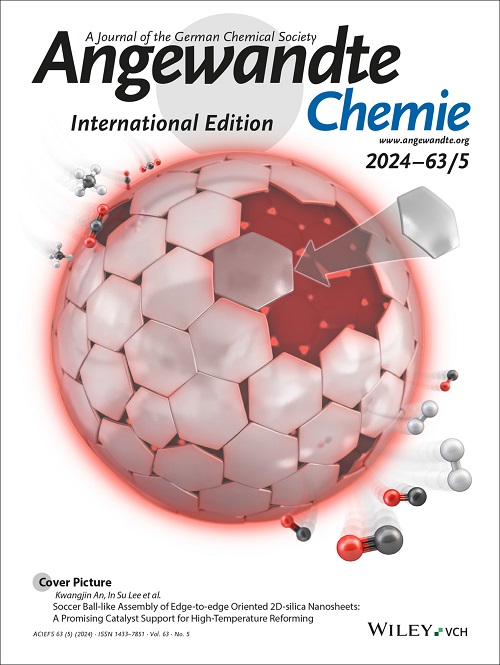Aminomethyl Phosphonic Acid as Highly Effective Multifunctional Additive for Modification of Electron Transport Layer and Perovskite in Photovoltaic Solar Cells
IF 16.1
1区 化学
Q1 CHEMISTRY, MULTIDISCIPLINARY
引用次数: 0
Abstract
The passivation of detrimental perovskite-based defects is critically acknowledged for fabricating highly effective perovskite solar cells (PSCs). The presence of a high-quality electron transport layer (ETL) is also considered a pivotal factor for effective charge extraction and transport dynamics. Herein, a simple small organic molecule, aminomethyl phosphonic acid (AMPA), is introduced as a multifunctional additive in the SnO2 ETL. The defects in the SnO2 ETL are effectively suppressed by passivating the oxygen vacancies upon the SnO2 surface. Simultaneously, the carrier mobility and crystallinity of SnO2 are enhanced, and the upward-regulated conduction band minimum (CBM) is beneficial for constructing a favourable energy level alignment with the perovskite layer. Notably, the introduced residuals on the SnO2 surface can function as crystalline seeds for growth of large perovskite grains, which can passivate the defects in the perovskite bulk phase, boundaries, as well as the SnO2/perovskite interface. Consequently, the power conversion efficiency (PCE) value of the AMPA-modified PSCs is enhanced from 19.91% to 24.22%. Most importantly, the unencapsulated PSCs with AMPA maintained 94.9% of the initial PCE during 720 h of storage at a relative humidity of 10%, attributed to the improved hydrophobicity of both the SnO2 and perovskite layers after AMPA modification.求助全文
约1分钟内获得全文
求助全文
来源期刊
CiteScore
26.60
自引率
6.60%
发文量
3549
审稿时长
1.5 months
期刊介绍:
Angewandte Chemie, a journal of the German Chemical Society (GDCh), maintains a leading position among scholarly journals in general chemistry with an impressive Impact Factor of 16.6 (2022 Journal Citation Reports, Clarivate, 2023). Published weekly in a reader-friendly format, it features new articles almost every day. Established in 1887, Angewandte Chemie is a prominent chemistry journal, offering a dynamic blend of Review-type articles, Highlights, Communications, and Research Articles on a weekly basis, making it unique in the field.

 求助内容:
求助内容: 应助结果提醒方式:
应助结果提醒方式:


